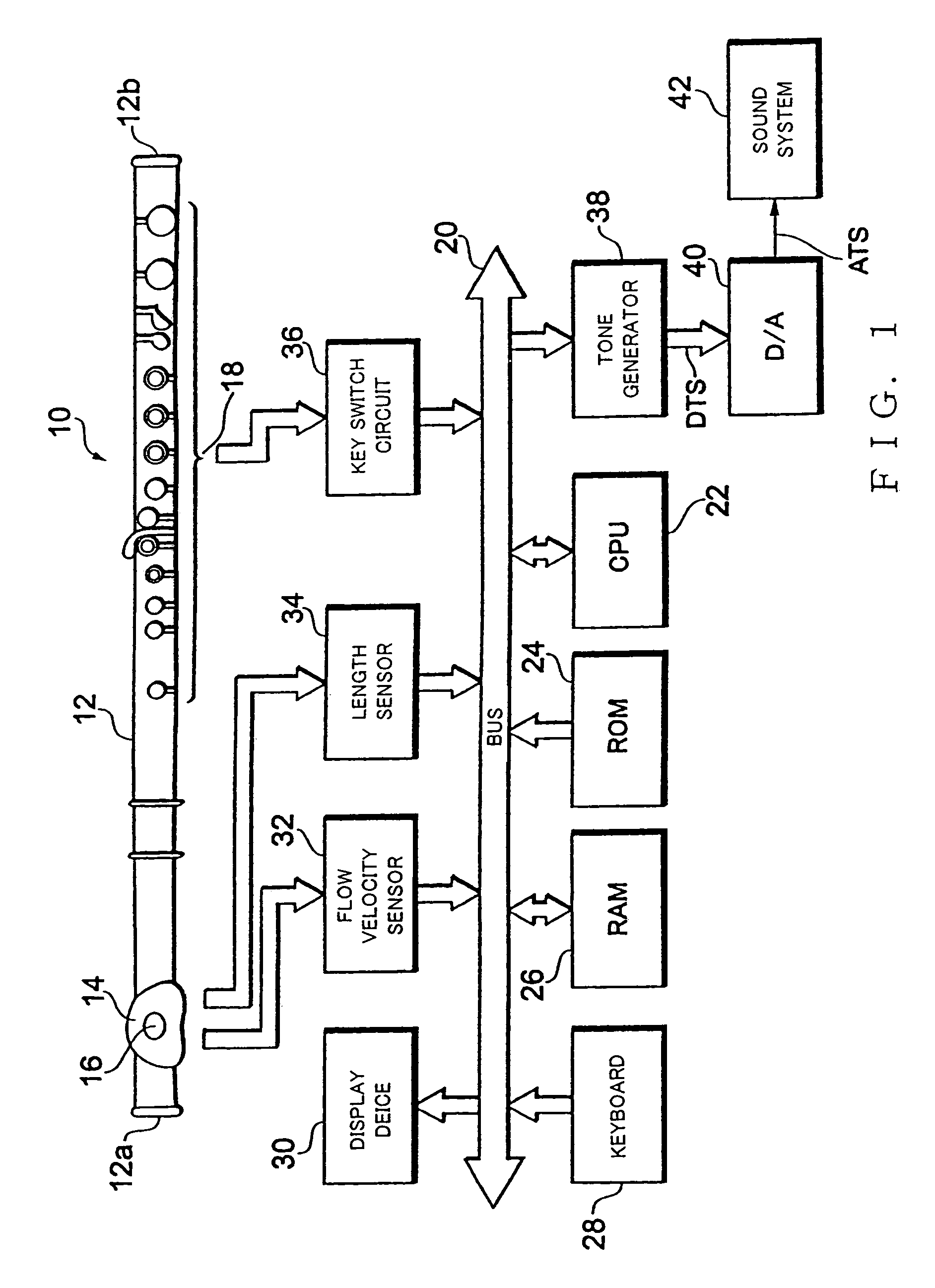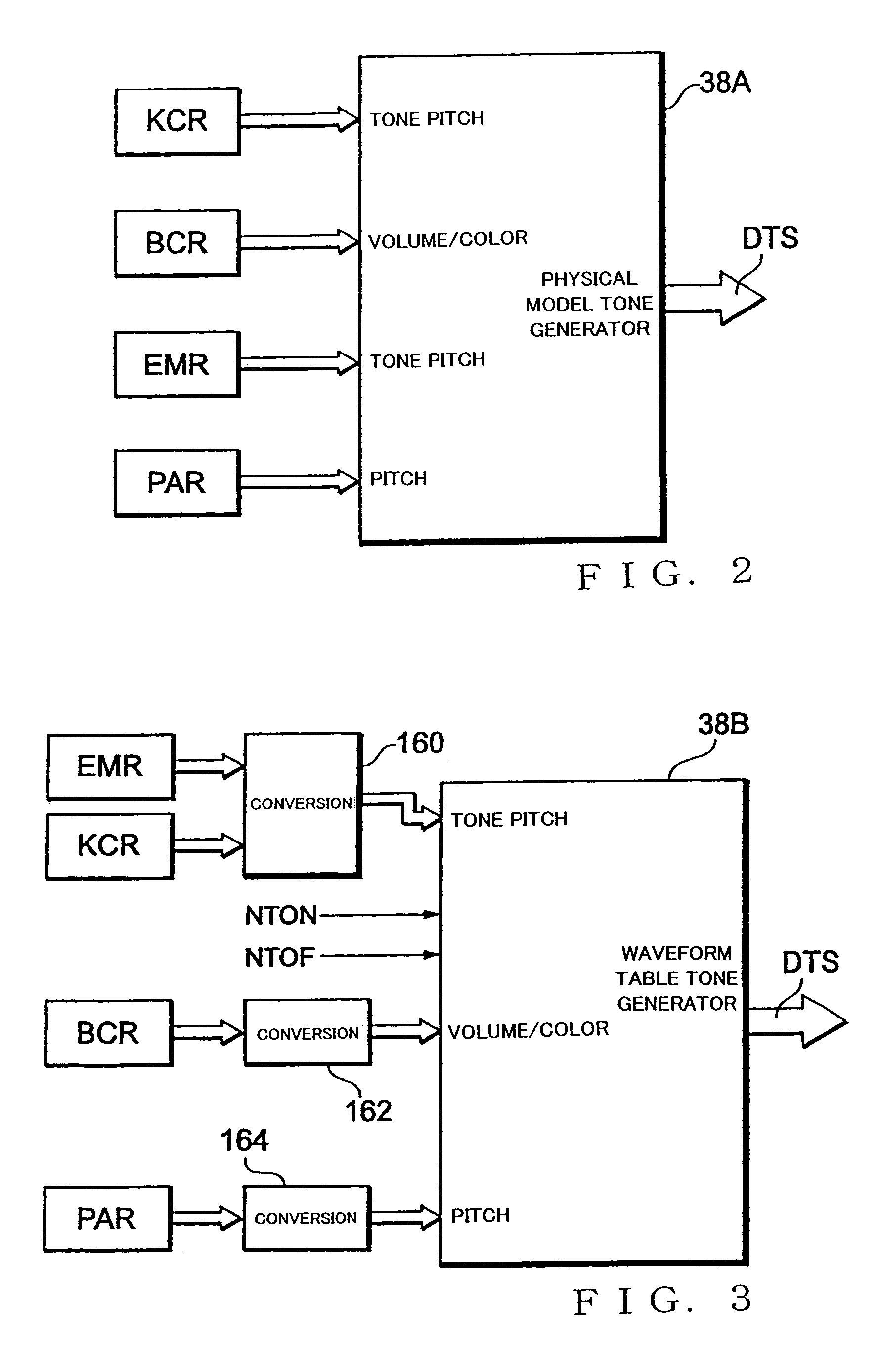Tone generator control apparatus and program for electronic wind instrument
a control apparatus and electronic wind instrument technology, applied in the direction of instruments, electrophonic musical instruments, selection arrangements, etc., can solve the problems of not being able to acquire such a real tone generating frequency, not being able to execute a performance, and not being able to permit different playing styles to properly play different octaves
- Summary
- Abstract
- Description
- Claims
- Application Information
AI Technical Summary
Benefits of technology
Problems solved by technology
Method used
Image
Examples
Embodiment Construction
[0057]FIG. 1 is a block diagram showing an example circuit construction of an electronic wind instrument in accordance with an embodiment of the present invention, where tone generator control is performed using a small-sized computer.
[0058]Wind controller 10, similar in shape to a flute, includes a tubular body section 12 having an elongated cavity extending from a closed end 12a to an open end 12b. On an outer peripheral surface of the tubular body section 12, there are provided a lip plate 14 having a blow hole or embouchure hole 16 communicating with the cavity of the tubular body section 12, and a tone key group 18 including a plurality of pitch-designating tone keys. The wind controller 10 does not generate a tone per se as a flute does, and thus, any suitable size of the tubular body section 12 may be set with user's usability etc. taken into account. The closed end 12a may be replaced with an open end.
[0059]The lip plate 14 has attached thereto a flow velocity sensor for det...
PUM
 Login to View More
Login to View More Abstract
Description
Claims
Application Information
 Login to View More
Login to View More - R&D
- Intellectual Property
- Life Sciences
- Materials
- Tech Scout
- Unparalleled Data Quality
- Higher Quality Content
- 60% Fewer Hallucinations
Browse by: Latest US Patents, China's latest patents, Technical Efficacy Thesaurus, Application Domain, Technology Topic, Popular Technical Reports.
© 2025 PatSnap. All rights reserved.Legal|Privacy policy|Modern Slavery Act Transparency Statement|Sitemap|About US| Contact US: help@patsnap.com



